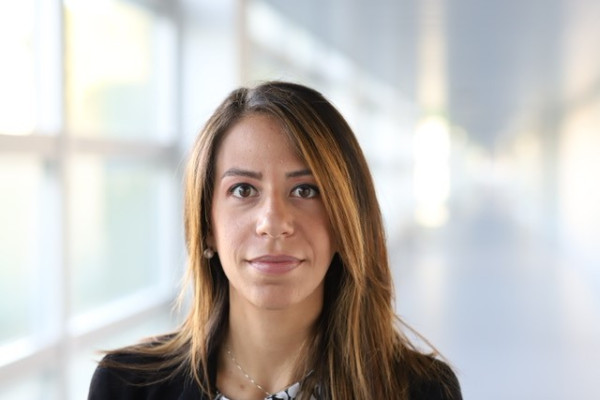Chiara Ricca
Interview by Nicola Nosengo, NCCR MARVEL, May 2024
What was your role in NCCR MARVEL, and what did you focus on at the time?
My focus was the study of the mechanisms by which doping can change the magnetic and electric properties of oxide materials. The idea was to start from materials that have known magnetic properties and use advanced computational methods to study how doping, or other experimental techniques such as strain, can induce phase changes affecting their behavior to obtain multiferroic materials, i.e. materials displaying more than one ferroic property at the same time, in particular ferromagnetism and ferroelectricity.
What was your path after leaving MARVEL?
During my PhD I was planning for an academic career, but my priorities changed during my Postdoc. Staying in academia would have meant changing city and country again a few times, and growing up I did not like anymore the uncertainty related this lifestyle. I knew I needed a change, but I was also not sure of which direction I wanted to go. I did not have a job offer when I left MARVEL, and I did not have a clear picture of what someone with my background could do in the industry. Computational methods are not widely applied to production yet, but I also felt like it was the perfect occasion to try something completely new. Around this time, I got in contact with a former colleague of mine at the University of Bern who got later hired by the Dow Chemical Company as a data analyst. The company had just reorganized its Swiss site and was hiring. I applied, and I’ve been there for two years now.

How can you describe your current job?
My role is Business Analyst, but I work in Procurement. It’s the department the company that negotiates purchases of materials, facilities, IT services, and everything else that is necessary for its operations. My team is trying to enhance the integration of procurement and business finance, and a lot of my work is about developing tools to guide decision making, create synergies and better ways to work together. This involves a lot of data analysis in different fields: on what we purchase, what we sell, how much we spend, how the teams change over time, on understanding how market dynamics and supply chain demands affect the prices of the raw materials we purchase, and monitoring how our sustainability strategy is going.
How did the MARVEL experience prepare you for this position?
To begin with, I have to thank the Italian school system. It may be less focused on the practical side of things than in other countries, but it teaches you to connect things instead of keeping every subject in its own box. This is very important for a career in the industry. The experience in MARVEL was fundamental to learn data science and data management. I improved my coding skills and learned how to handle data on a much larger scale than before. What I missed from my experience in academia was being able to see the application of my research materialize in a short-term. In my current job, what I do has an impact today. On the other hand, research allows you to experiment and think freely about possible solutions. In the industry I had to learn that all changes and improvements must be done step by step, focusing on things that are feasible in a matter of months. And if something is not working, you need to act swiftly and come up with an alternative.
What advice would you have for young researchers who are considering a career in industry?
When I left academia, it was very hard for me to imagine what I could do in another sector. In hindsight, that was nonsense, because the experience in academia gives you a flexibility that other people don’t have and that will pay off if you move to the industry. In the end the most important thing is networking. Most positions in the industry are not even advertised, and knowing the right people is crucial. You can use LinkedIn or personal contacts, but it’s important that you are not afraid of reaching out and making connections. The technical part is the one you should worry about the least: most companies will train you for that or you can learn it on your own or with experience. But you need to invest in soft skills such as negotiating, working in team, managing time. Developing those skills takes longer, and yet they are essential.
